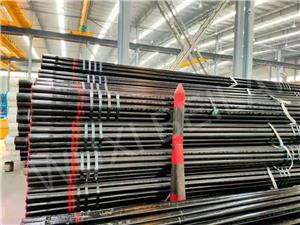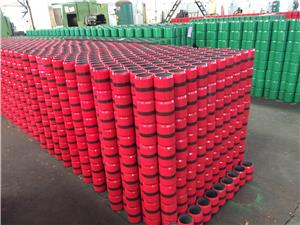ASTM A333 Low Temperature Pipe: fearless cold temperatures and protection
Pipeline delivery systems face serious challenges in extreme cold temperatures. As conventional piping materials are often unable to withstand the negative effects of extreme temperatures and are prone to brittle cracking, deformation and even leakage, which directly threaten the safety of production operations and the reliability of environmental protection, ASTM A333 Low Temperature Pipe has become a reliable choice for cryogenic applications due to its excellent cryogenic resistance.
Low temperature pipe materials are selected on the basis of very stringent criteria, usually austenitic stainless steels, nickel alloys and titanium alloys with excellent low-temperature resistance. These materials at very low temperatures can still show excellent strength, toughness and corrosion resistance, even at extreme temperatures can effectively avoid the occurrence of embrittlement.
In addition to the choice of low temperature pipe materials, low Temperature Pipe also demonstrate the quality of excellence in the processing technology. In order to ensure that the pipe can withstand the rigours of the low-temperature environment, low Temperature Pipe using a unique welding process and precision heat treatment process, these processes not only significantly improve the strength, toughness and corrosion resistance of the material, but also minimise the defects in the welding process, thus ensuring that the structural integrity of the pipeline solidity and integrity.
ASTM A333 Low Temperature Pipe offers the following advantages over common piping materials:
Excellent low-temperature resistance: ASTM A333 Low Temperature Pipe can withstand extreme low-temperature environments, even in the harsh conditions of minus tens of degrees Celsius, can still maintain excellent performance stability, without fear of brittle cracks, deformation and other challenges.
Excellent corrosion resistance: ASTM A333 Low Temperature Pipe shows excellent corrosion resistance in low-temperature environments, which effectively extends the service life of the pipe and eliminates the risk of leakage caused by corrosion failure.
High strength and high toughness: ASTM A333 Low Temperature Pipe can withstand high working pressure, and at the same time has excellent impact resistance, to ensure the safe and reliable operation of the pipeline.
Significantly low thermal conductivity: ASTM A333 Low Temperature Pipe effectively reduces heat loss, significantly improves energy efficiency and helps enterprises reduce energy costs.
Flexible processing performance: ASTM A333 Low Temperature Pipe supports personalised customisation according to specific application scenarios, easily meeting all kinds of complex needs.
ASTM A333 Low Temperature Pipe has a wide range of applications in petrochemical, natural gas, chemical and other fields, providing a reliable guarantee for the low-temperature process in different industries.
Petrochemical: ASTM A333 Low Temperature Pipe are used to transport cryogenic media such as liquefied natural gas (LNG) and liquefied petroleum gas (LPG) to ensure safe and efficient production and transport.
Natural Gas: ASTM A333 Low Temperature Pipe is used to transport natural gas and ensure the stable operation of natural gas pipelines at low temperatures.
Chemical: ASTM A333 Low Temperature Pipe is used to transport cryogenic chemicals to ensure the quality and safety of the chemicals.
The application of ASTM A333 Low Temperature Pipe in these fields not only improves production efficiency and product quality, but more importantly ensures production safety and environmental safety. It provides a strong guarantee for the application of cryogenic technology, promotes the rapid development of the cryogenic industry, and creates greater value for human society.
About ASTM A333 Low Temperature Pipe Maintenance
Maintaining ASTM A333 Low Temperature Pipe is paramount to guaranteeing the safe and seamless operation of liquefied natural gas (LNG) transportation systems. To thwart corrosion and deterioration, prolong the pipelines' lifespan, and uphold safety and stability, routine maintenance measures must be undertaken meticulously. These encompass dust removal, thorough cleaning, washing, disinfection, and vital rust eradication and prevention treatments.
Maintenance ought to encompass thorough inspections for any signs of wear, tear, or damage, like cracks and leaks, that could potentially compromise the safety and efficiency of the LNG transportation system. Importantly, these inspections should be performed by seasoned professionals who possess the expertise to precisely evaluate the pipeline's condition and advise on the appropriate repairs or replacements as needed.
ASTM A333 Low Temperature Pipe maintenance comprises a multifaceted approach. If you're interested in exploring the intricacies of ASTM A333 Low Temperature Pipe, kindly inquire with us, and we will be delighted to offer you proficient and efficient Low Temperature Pipe solutions tailored to your specific needs.
Welcome to consult ASTM A333 Low Temperature Pipe related information, let us provide you with efficient cryogenic tube solutions.




